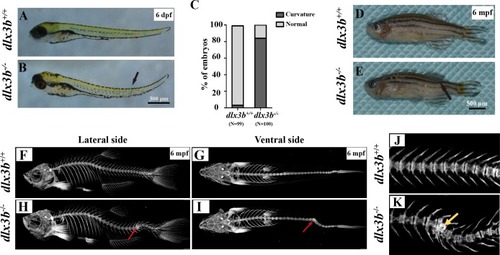Figure 3
- ID
- ZDB-FIG-200306-28
- Publication
- Pang et al., 2020 - Mutant dlx3b disturbs normal tooth mineralization and bone formation in zebrafish
- Other Figures
- All Figure Page
- Back to All Figure Page
|
(A–B) Body curvature of 6–7 dpf larvae under a stereomicroscope. The body curvature in |
| Fish: | |
|---|---|
| Observed In: | |
| Stage Range: | Day 6 to Adult |

